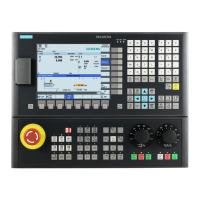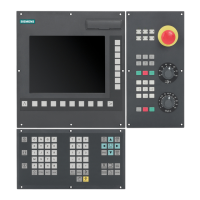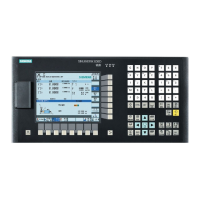S3: Synchronous spindle
13.1 Brief description
Extended Functions
706 Function Manual, 03/2013, 6FC5397-1BP40-3BA1
Number of synchronous spindles
It is possible to couple several following spindles to one leading spindle. The number of
following spindles on this leading spindle depends on the respective version of the
appropriate software versions.
Any number of following spindles in any channels of one NCU or a different NCU can be
coupled to this leading spindle.
Note that one spindle is always the master and the number of couplings results from the
number of axes less the master.
Options in synchronous mode
The following functions are available for synchronous mode:
● FS and LS turn at the same speed
(n
FS
= n
LS
; transformation ratio k
Ü
= 1)
● Rotation in the same or opposite direction between LS and FS
(can be defined positively or negatively using transformation ratio k
Ü
)
● Following and leading spindles rotate at different speeds
(n
FS
= k
Ü
· n
LS
; transformation ratio k
Ü
≠ 1)
Application: Polygonal turning
● Settable angular position between FS and LS (φ
FS
= φ
LS
+ Δφ)
The spindles run at synchronous speed with a defined angular offset between FS and LS
(position synchronous coupling).
Application: Shaped workpieces
● Activation of synchronous operation between LS and FS can take place when the
spindles are in motion or at standstill.
● The full functionality of the open-loop and position control modes is available for the
leading spindle.
● When synchronous mode is not active, the FS and LS can be operated in all other
spindle modes.
● The transformation ratio can also be altered when the spindles are in motion in active
synchronous mode.
● With synchronous spindle coupling switched on, the offset of the FS to the LS (overlaid
movement) can be altered.

